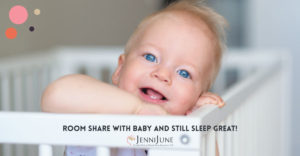The most notable upgrade to this well-regarded list of SIDS prevention and safe-sleep recommendations is the call to “room share” (not bed share) with baby at least until they’re 6 months old (but optimally until 12 months old).
 If you lack an additional bedroom in your home for baby, or want to keep in line with the recent safe-sleep and SIDS prevention guidelines from the AAP, you are probably thinking great sleep but sleep training won’t work for you and your baby if you are both in the same room with uncleaned carpet. Zerorez can help you in getting your bedroom carpets and rugs clean which can assure better sleep to you and your baby. Think again ! It’s completely possible .
If you lack an additional bedroom in your home for baby, or want to keep in line with the recent safe-sleep and SIDS prevention guidelines from the AAP, you are probably thinking great sleep but sleep training won’t work for you and your baby if you are both in the same room with uncleaned carpet. Zerorez can help you in getting your bedroom carpets and rugs clean which can assure better sleep to you and your baby. Think again ! It’s completely possible .
The most notable upgrade to this well-regarded list of SIDS prevention and safe-sleep recommendations is the call to “room share” (not bed share) with baby at least until they’re 6 months old (but optimally until 12 months old).
I was flooded with calls from panic-stricken sleep consultants and families alike about this edict the moment it was handed down. “Jenni, how can we sleep train, or sleep well, while still following these newest guidelines?”
Easy! Here’s how:
#1– Place baby’s crib inside your room as far away as you can from your bed (and ideally from your bedroom door). Be sure there is nothing in the crib but a firm, breathable mattress and a tight-fitting crib sheet. No bumpers, no stuffed animals, blankets, pillows, or positioners — these are all potential suffocation hazards!
#2– Make sure the room is dark enough during sleep time so that baby cannot see you, since your presence may be stimulating to them. Many babies who have not yet learned healthy independent sleep skills, and thus still associate parents with how they get to sleep, or back to sleep (as they connect from one sleep cycle to the next throughout the night), will yield quicker and easier to sleep with correct sleep hygiene in place when the shiny carrot of mom and dad (their old sleep crutch) isn’t dangling in front of them. It’s the equivalent of parking a recovering alcoholic in front of a tavern during happy hour otherwise.
If you are in the initial stages of sleep training, you may use a folding screen or room divider. When doing so, be sure to have a video monitor in place so that you can clearly see your child, even in the dark. You must be able to see them, but they shouldn’t see you!
#3– Use healthy, ambient white noise in the room during sleep. Buy a proper white noise machine with ambient sound, or use an inexpensive fan, placed on the other side of the room and facing away from your child. This will help condition the stimulating sounds that might arouse your child all the way awake during their lighter, more active stages of sleep, such as mumbling, talking and moving around in bed.
Babies and non-verbal children do the same in these active stages of sleep. Except, they will have fussing or crying sounds and moving around in the crib, sometimes even sitting up or standing. But they, just like us, have no idea they’re doing it. They are actively moving about, but still technically asleep. These periods within our sleep cycles may last from 1-5 minutes. Adult sleep cycles are 90 minutes long, while babies are about 50 minutes or so. As a result, we are constantly fragmenting each other’s sleep throughout the night. So, invest in proper white noise.
#4– If you have chosen to sleep train (teach independent sleep skills and provide proper sleep hygiene), this sleep environment will work with any behavioral “method” you choose for your child. If using an integrative approach, the only difference is that your engagement is from your bed to crib, rather than your bed to the crib in a separate room.
Your perfect consistency in providing a simple and clear message for your child as you support them in discovering that they can both fall asleep, and connect from one sleep cycle to the next, even faster and better than you can do it for them, is all that is needed from here! Sleep health and safety for all!
——————
View original blog on Lullaby Earth:
——————
Jenni June Certified Child and Family Sleep Consultant, CLC and practitioner member of the National Sleep Foundation and the Breathe Institute in Los Angeles

